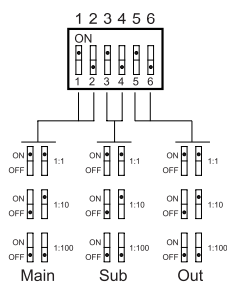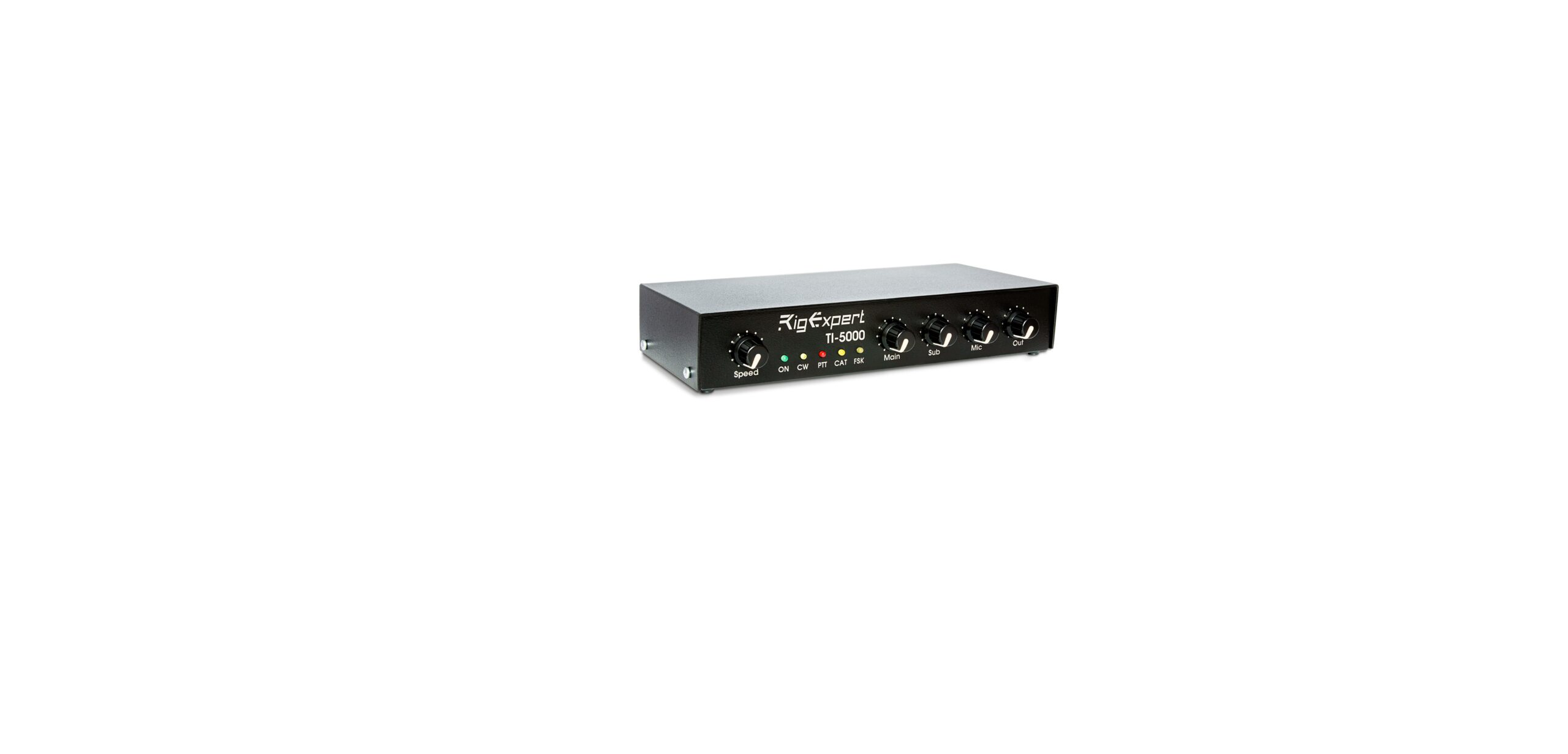RigExpert TI-3000 Digital Mode and Radio Control Interface Guide

Introduction

Thank you for purchasing a RigExpert TI-3000 USB Transceiver Interface! We did our best to make it powerful yet easy to use. RigExpert TI-3000 is a device for operating phone, CW, and digital modes using a personal computer with a USB port.
It provides:
Transceiver audio interface
The Analog audio interface is a connection to transceiver audio output (external speaker connector or line output) and transceiver audio input (microphone connector or line input). The audio interface enables operating digital modes, as well as other useful functions (such as measuring levels of a signal from the air) by using a computer Input (main and sub-channels), and output volume levels are adjusted by potentiometers on the front panel of the device.
CAT interface for various transceiver models
CAT (Computer Aided Transceiver) system provides control of transceiver frequency, operating mode, and other functions by computer software. Normally, modern transceivers have serial (with various signal levels) links providing a CAT interface. A separate COM port is created for the CAT system so the computer software can communicate with the transceiver.
PTT and CW output functions
Transceivers provide PTT (Push To Talk) and CW (Continuous Wave) keyer inputs to allow setting the transmitter on or off and operating CW using an external device (PTT pedal, CW bug or paddle, terminal node controller, or personal computer). A separate COM port is created for PTT/ CW outputs.
Squelch input
Some software, such as EchoLink, requires the interface to provide a squelch input to detect if the radio channel is busy. In RigExpert TI-3000, the squelch input is assigned to the DCD line of the COM port used for PTT and CW outputs.
Operating the TI-3000
Front and rear panels
Front panel:
- ON. Lights when the RigExpert TI-3000 device is plugged in and the drivers are installed.
- CW. Shows transmissions in CW mode.
- PTT. Indicates when the transceiver transmits.
- CAT. Monitors CAT data exchange between the transceiver and computer
- Main. Input level, channel 1 (main receiver audio).
- Sub. Input level, channel 2 (subreceiver audio).
- Out. Output level (audio to the transceiver).
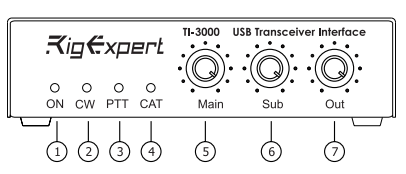
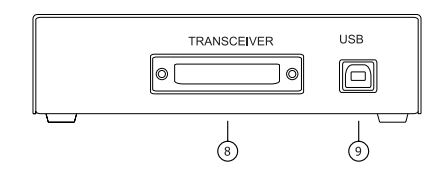
Rear panel: - TRANSCEIVER. 25-pin transceiver connector.
- USB IN. Connect to the computer USB port.
Transceiver and computer connection
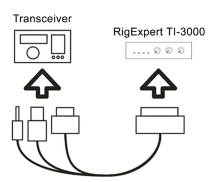
The connection to your transceiver is made by using a specialized cable. A specific type of cable depends on the manufacturer and the model of the transceiver. Please watch the marking to make sure all plugs are inserted properly into the corresponding sockets located on your transceiver.
You may either order a transceiver cable with your TI-3000 or assemble it yourself. See the schematic diagrams on our website, www.rigexpert.com.
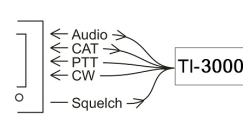
A number of analog and digital signals are routed between your transceiver and RigExpert TI-3000. Cables for most modern rigs (Icom, Kenwood, Yaesu, Ten-Tec, Elecraft) are available; future rigs are supported by the design of the universal 25-pin connector of RigExpert TI-3000.
The squelch connection is not available in all cables manufactured by our company. The user has to add this connection, if necessary.
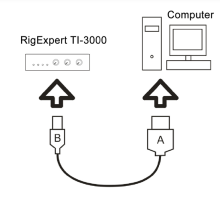
Use a standard USB A-B cable (up to 5 meters long) to connect your RigExpert TI-3000 to the USB port of your computer. It is recommended to use USB sockets located at the back panel of the PC. Once the cable is connected, the computer detects a new device. No drivers are required for modern operating systems. More info on www.rigexpert.com/ti-3000.
Annex 1 Specifications
General features:
- Transceiver audio interface for operating digital modes
- CAT (Computer Aided Transceiver) system
- PTT and CW outputs
- Squelch input
Computer connection:
- USB (Universal Serial Bus) connector
- Powered from the USB port (consuming 100 mA maximum)
- No external power supply needed
Audio interface:
- Insulated from digital nets
- Maximum input/output amplitude is 1V
- Input/output sample rate: 8 to 48 kHz
- True 16-bit DAC/ADC used
- Volume levels are adjusted by the front panel potentiometers
CAT serial port:
- Baudrate: 300-115200 baud
- Electrical compatibility: RS-232, CI-V, TTL or inverted-TTL (Yaesu, Icom, Kenwood, Ten-Tec, Elecraft, and JRC transceivers)
PTT/CW outputs:
- PTT output: open collector and TTL level
- CW output: open collector
- The maximum current is 500 mA
System requirements:
- Desktop or laptop computer with USB 1/2/3 compliant port
- Windows XP/Vista/7/8/10 (32 or 64-bit), Mac OS or Linux operating system
Transceiver connection:
- Single 25-pin connector for transceiver cable
- Various transceiver models supported
Annex 2 Adjusting input and output audio levels
You can adjust input and output audio levels by regulators on the front panel. However, it is possible to increase the range of input and output audio levels by using 6 switches which are located on the bottom side of the TI-3000.
